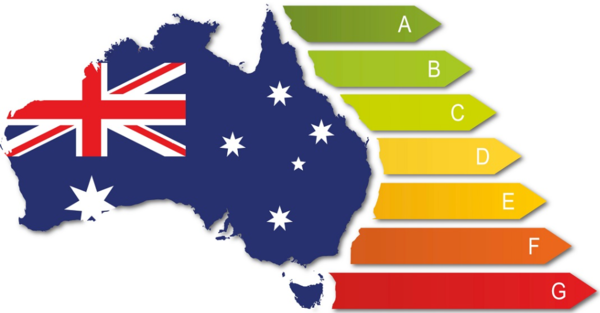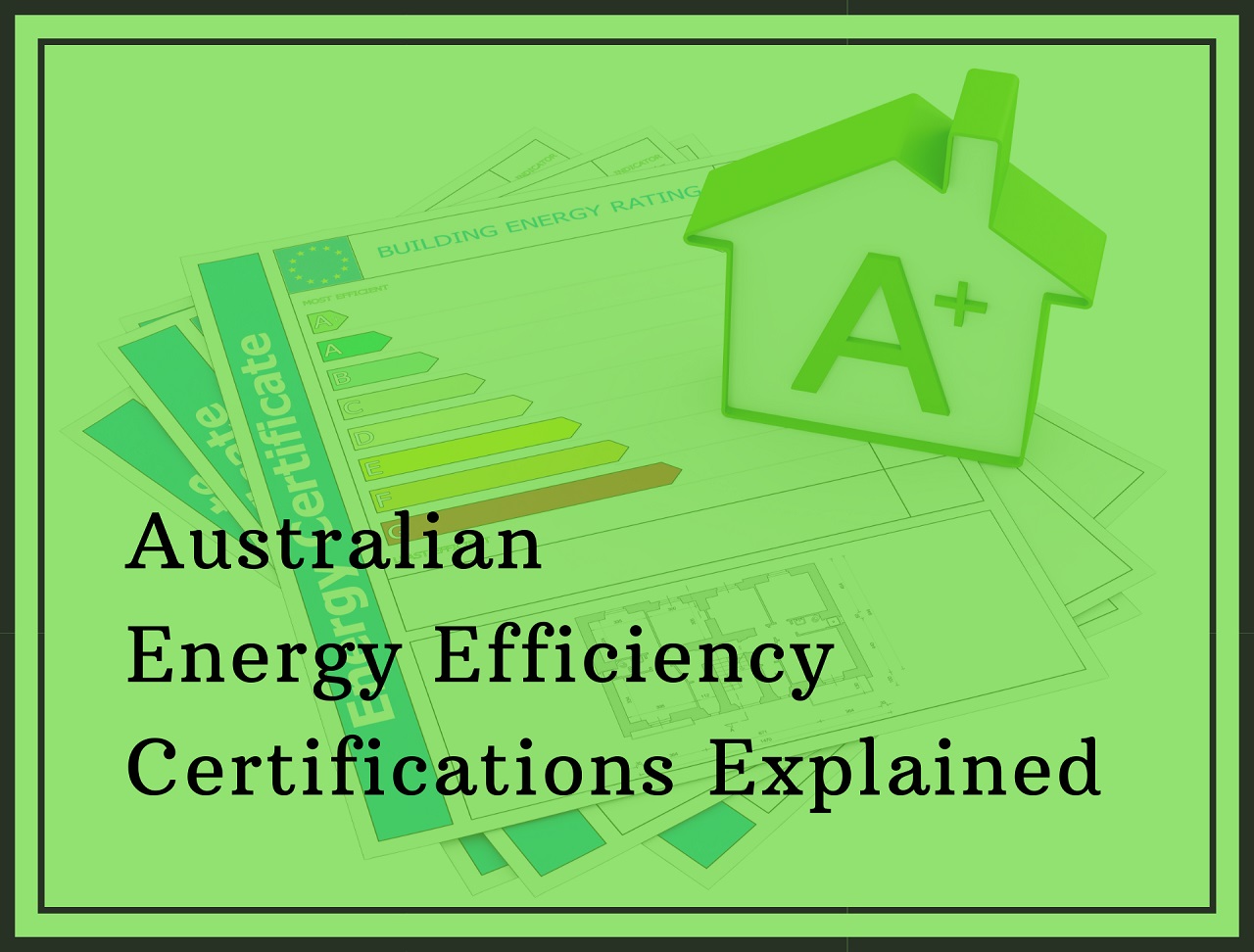The Future of Energy Efficiency in Australia: What You Need to Know

Energy efficiency has become a key issue in Australia as the country looks towards a more sustainable future. 6 star energy rating house is a target to achieve for many homeowners in Australia as the rising energy costs and concerns over the impact of greenhouse gas emissions on the environment have led to a push towards greater energy efficiency in homes, businesses, and industry.
Household carbon emissions make up a significant proportion of Australia's total greenhouse gas emissions, accounting for at least 20% of the country's overall carbon footprint. So, thinking about a more energy-efficient future is mandatory. But what exactly is energy efficiency, and what is the future of energy efficiency in Australia?
let's dive in and explore everything you need to know regarding this topic.
What is Energy Efficiency?
Energy efficiency is all about using less energy to perform the same task, without sacrificing comfort or productivity. It's a win-win situation for both the environment and our budgets! In Australia, energy efficiency has become increasingly important as the current low energy efficiency leads to excessive energy consumption in homes, resulting in high energy bills and a significant contribution to climate change.
One example of energy efficiency in Australia is the six star energy rating system by expert home energy rating providers for houses. This system rates the energy efficiency of a home on a scale of 0-10, with 6 stars being the minimum requirement for new homes. This means that a 6 star rated house is expected to have lower energy consumption, better insulation, and more efficient appliances compared to a lower-rated house.
Low Energy Efficiency Standard in Australia
The lack of emphasis on energy efficiency in homes, businesses, and industries has resulted in excessive energy consumption and higher energy bills In Australia. This not only affects our wallets but also contributes to climate change and other environmental issues.
When it comes to residential buildings, many older homes were built before the introduction of energy efficiency standards, which means that they can be poorly insulated and inefficient in terms of energy consumption. Over 9.5 million homes across Australia, which were built before energy efficiency standards were introduced, still lack adequate insulation, lighting and appliances. This means that residents of these homes are exposed to discomfort, high energy bills and even health risks.
In terms of businesses and industry, low energy efficiency standards can result in significant energy waste and unnecessary costs. Energy-intensive industries such as mining and manufacturing have a particularly high impact on energy consumption and greenhouse gas emissions. However, there are many energy-efficient technologies and practices that can be implemented to reduce energy consumption and costs.
The Present Energy Efficiency Scenario
For Residential Buildings:
• The current minimum energy efficiency standards for residential buildings in Australia are set by the National Construction Code (NCC).
• The NCC requires new homes to achieve a minimum 6 star energy rating report, which means that the building is designed to use 50% less energy for heating and cooling compared to a standard home built before 2003.
• The NCC also sets minimum energy efficiency standards for building materials, insulation, windows, and appliances to ensure that new buildings are as energy-efficient as possible.
For Household Appliances:
• The Australian government has introduced energy efficiency standards and home energy ratings for a range of household appliances, including refrigerators, washing machines, air conditioners, and televisions.
• Refrigerators must meet a minimum 3-star energy rating, which means that they are at least 22% more energy-efficient than the minimum required standard.
• Air conditioners must meet a minimum 2.5-star energy rating.
• Televisions must meet a minimum 4-star energy rating.
And for Lighting:
• The government recommends using LED bulbs, which use up to 80% less energy than traditional incandescent bulbs and can last up to 25 times longer.

Possible Future Opportunities for an Energy-Efficient Australia
- Increased adoption of renewable energy: Renewable energy sources such as solar, wind and hydropower have become more cost-effective in recent years and are now competitive with traditional fossil fuels. Unlike fossil fuels, renewable energy sources are not subject to price volatility or supply disruptions. By embracing renewable energy, Australia can reduce its dependence on non-renewable sources and lower greenhouse gas emissions. Moreover, many renewable energy projects are located in rural areas, providing economic benefits to these regions. So, it’s a complete solution for the whole country.
- Smart homes and buildings: The rise of smart home technology offers an opportunity to increase energy efficiency in buildings. Studies have shown that smart homes can reduce energy usage by up to 30%, resulting in significant cost savings for homeowners. Smart devices such as thermostats, lighting and appliances can be controlled remotely and programmed to run only when necessary, reducing energy waste and costs. Overall, it can also improve comfort levels by allowing homeowners to control the temperature, lighting, and other factors that affect their living environment.
- Sustainable transportation: Encouraging the adoption of electric and hybrid vehicles can reduce the carbon footprint of the transportation sector, which is a significant contributor to greenhouse gas emissions. Investing in public transportation infrastructure can also reduce the number of cars on the road, leading to lower emissions and reduced congestion. The adoption of EVs has increased in Australia in recent years, with an estimated 18,000 electric cars on the roads as of 2021 and almost doubled by 2022 which is a good sign for the future.
- Energy-efficient appliances and equipment: The development and adoption of energy-efficient appliances and equipment can significantly reduce energy consumption and costs. These appliances and equipment are designed to use less energy while performing the same functions as their traditional counterparts. Energy Star-rated appliances, for example, use up to 50% less energy than traditional appliances, while LED lighting can reduce energy consumption by up to 80%. The good news is in recent years, the adoption of energy-efficient appliances has increased in Australia due to rising energy costs, government incentives, and consumer awareness.
5. Energy storage technology: Energy storage technology is an essential component of a sustainable energy system. It involves the use of devices or systems to store energy that can be used later when it is needed. Battery storage technology has the potential to revolutionise the way we store and use energy. With advances in battery technology, excess energy generated by renewable sources can be stored and used during times of high demand, reducing the need for fossil fuel-powered energy generation.
6. Energy-efficient industrial processes: Energy-intensive industries such as mining, manufacturing and agriculture can significantly reduce their carbon footprint by adopting energy-efficient processes and technologies. This not only reduces energy consumption and costs but also improves the sustainability of these industries.
Final Words
In conclusion, it is clear that energy efficiency is not only important for reducing our carbon footprint but also for saving money on energy bills and improving our quality of life. By embracing these opportunities and making energy efficiency a priority, we can create a better future for ourselves, our communities, and the planet as a whole. The future is bright for energy efficiency in Australia, and we must take advantage of these opportunities to make a positive impact on our environment and our lives.


